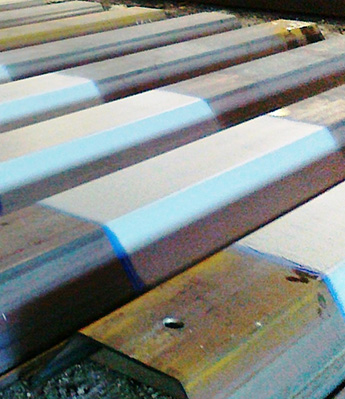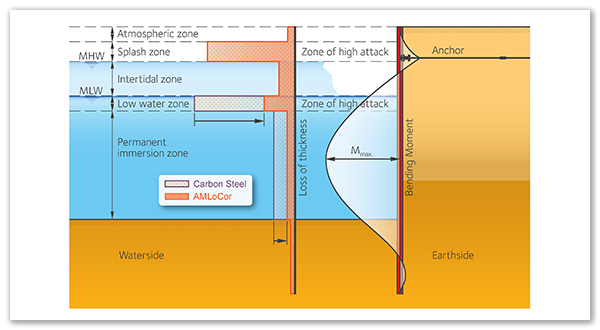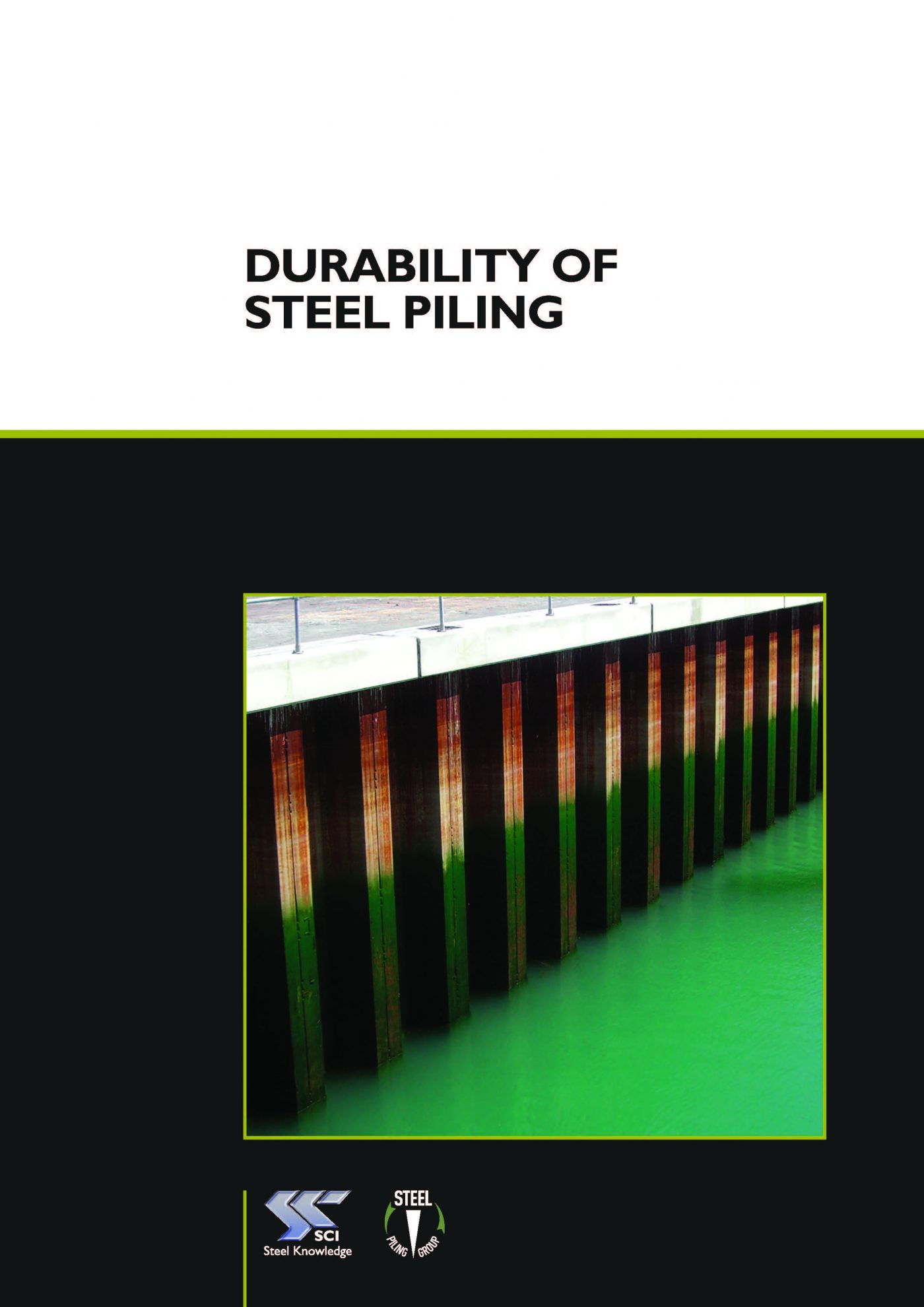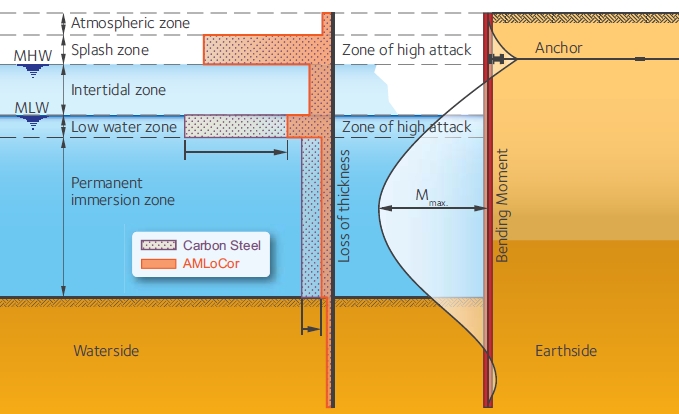The key advantage of amlocor is a significant reduction of the corrosion rates in the low water zone lwz and in the permanent immersion zone piz which is normally the location of the maximum bending moments and consequently the location of the highest steel stresses.
Corrosion rates of steel sheet piles.
Army corps of engineers states that the corrosion rate in marine environment on steel sheet piles is between 2 and 10 mils year which corresponds to approx.
0 05 to 0 25 mm year.
Corrosion is described on driven piling above and below the water table after many years of exposure in soils having resistivities between 78 and 50 000 ohm cm and ranging in ph from 2 3 to 8 8.
Materials steel steel sheet pile is available in various shapes types sizes weights and steel grades.
The anchor force s applied to the piling wall.
Steel sheet pile wall corrosion in soils and water is a complex phenomenon.
The deterioration of these structures is costly and difficult to predict.
A corrosion rate of 5 mils per year is used as a guide for carbon steel in seawater.
Some piling walls are driven into pre existing soil.
Corrosion rates in the u s.
In the united states the u s.
Engineers usually rely upon a theoretical approach when dealing with corrosion when difficult corrosive conditions are anticipated.
In the united states the u s.
Structures built of sheet piling obtain stability from being embedded into sound natural soil referred to as the buried zone.
Dealing with piling corrosion steel piles and sheet piles in soil and water must remain in place for a long time without corrosion affecting their load bearing capacity.
The aim of this paper was to deal some empirical corrosion models which are analyzed and compared to eurocode 3 part 5 to estimate corrosion rate and the loss of thickness of anchored steel sheet pile wall.
Sheet pile may be hot rolled or cold rolled piles fig.
Are normally calculated using mils per year.
Note that in specific situations corrosion due to local conditions may lead to higher corrosion rates requiring detailed site examinations and data analysis.
In other words the corrosion rate is based on the number of millimeters thousandths of an inch penetrated each year.
In many circumstances steel corrosion rates are low and the use of protective methods is not necessary.
Z type piles and amer ican society for testing and materials international astm a572 grade 50 are the most common.
In order to calculate the rate of corrosion the following information must be collected.
Ideally their designs must not result in steel.
Typical corrosion rates can be taken from the european standard en 1993 part 5.










